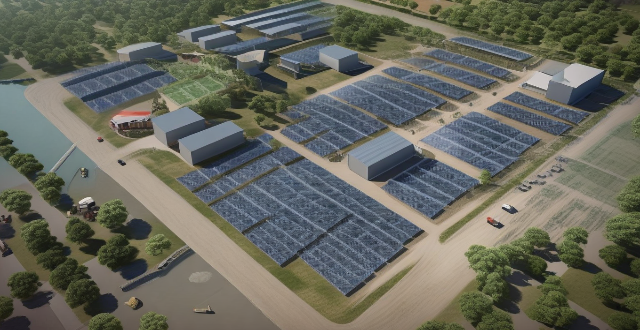Storing wind energy is crucial for integrating renewable energy into power grids. Wind turbines produce electricity intermittently based on weather conditions, unlike traditional power plants that can adjust output on demand. Several methods exist to store wind energy effectively, including battery storage systems, pumped hydro storage, compressed air energy storage (CAES), chemical batteries, flow batteries, thermal storage, and flywheels. When selecting a storage method, factors such as capacity, duration, cost, efficiency, environmental impact, and geographic suitability must be considered. As technology advances and costs decrease, we can expect more innovative solutions for efficient wind energy storage.

Storing Wind Energy: Methods and Considerations
Storing wind energy for later use is a critical aspect of integrating renewable energy into power grids. Unlike traditional power plants that can adjust output on demand, wind turbines produce electricity intermittently based on weather conditions. Here are several methods to store wind energy effectively:
Battery Storage Systems
Pumped Hydro Storage
- Description: This involves two water reservoirs at different elevations. When wind energy production is high, water is pumped from the lower to the upper reservoir. Later, the water is released through turbines to generate electricity when needed.
- Pros: It has a large storage capacity and can provide power for hours to days.
- Cons: The geographical requirements limit its widespread application.
Compressed Air Energy Storage (CAES)
- Description: Excess wind energy is used to compress air and store it in underground reservoirs. When electricity is needed, the pressurized air is released, heated, and expanded to drive turbines.
- Pros: Can be stored for long durations with relatively low cost.
- Cons: Requires specific geological formations for air storage.
Chemical Batteries
- Description: Commonly used batteries like Lithium-ion convert electrical energy into chemical potential, which can be converted back into electricity when needed.
- Pros: High efficiency and fast response time.
- Cons: Limited lifespan and high cost per unit of energy stored.
Flow Batteries
- Description: These use two liquid electrolytes separated by a membrane. They can discharge and recharge efficiently over many cycles.
- Pros: Longer lifespan than conventional chemical batteries and can be scaled up easily.
- Cons: More expensive and larger in size compared to other battery types.
Thermal Storage
- Description: Heat generated from excess wind energy is stored and later used to produce steam for turbines.
- Pros: Can be efficient and suitable for industrial processes needing heat.
- Cons: Less practical for direct electricity generation unless combined with a heat engine or steam turbine.
Flywheels
- Description: A mechanical form of storage where a rotating mass stores kinetic energy that can be converted back into electricity.
- Pros: Can provide instantaneous responses for short periods.
- Cons: Not suitable for long-term storage due to friction losses.
Key Considerations
When selecting a storage method, several factors must be considered:
- Capacity: How much energy needs to be stored?
- Duration: How long does the storage need to last?
- Cost: What is the budget for storage infrastructure?
- Efficiency: How much energy will be lost during storage and retrieval?
- Environmental Impact: What are the environmental consequences of the storage solution?
- Geographic Suitability: Does the chosen method align with the local terrain and resources?
In conclusion, storing wind energy requires a combination of technologies tailored to specific applications and regional conditions. As technology advances and costs decrease, we can expect more innovative solutions for efficient wind energy storage.